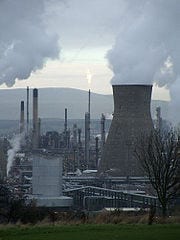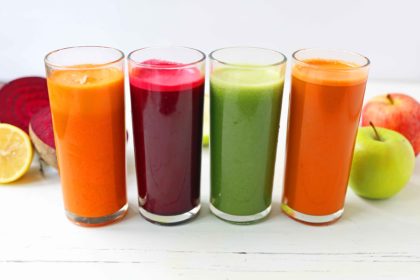Artificial fragrances are synthetically-derived substances used solely to impart an odor. They are a common offender of adverse allergic reactions. In a study by the North American Contact Dermatitis Group, fragrances were the number one cause of allergic and irritant reactions to cosmetics. (Preservatives were the second most common cause of cosmetic allergies.)
Does This Smell Good To You?
Pre-market approval of fragrance materials is NOT required. With the exception of color additives and nine prohibited ingredients, fragrance manufacturers may use any raw material in a fragrance formula and are exempt from disclosing the chemicals on their label.
IMPORTANT: Fragrance ingredients need only be listed on the label as “fragrance” thereby limiting the FDA’s surveillance and actual authority over the fragrance industry.
Fragrance Free or Unscented…..Are They Really?
There are no official government definitions for “fragrance free”, “unscented”, or “natural fragrance”. In short, manufacturers can formulate their own interpretation of such label claims.
Commercial “fragrance free” or “unscented” products are rare and may only mean they have no discernible scent. Companies may add a masking fragrance to a product to conceal the odor of its raw ingredients without adding a discernible odor to it.
According to the FDA, it is not required to declare the ingredient or mixture of ingredients acting as a masking fragrance. A masking agent may be designated as “fragrance” on the label without declaring individual ingredients or it need not be declared at all if it is present at an insignificant level.
“Incidental ingredients” are not required to appear on the label. Consequently, individuals with adverse reactions to fragrance chemicals cannot be assured a product is actually fragrance free by reading the label.
Specific Fragrance Chemicals

There are over 5,000 fragrance chemicals used in the industry. One fragrance may consist of hundreds of synthetic ingredients – many of which are volatile petrochemical compounds.
The following list is a sampling of compounds used to manufacture a fragrance:
Amyl Cinnamic Aldehyde
Fragrance: Jasmine, Floral, Cocoa
- Widely used in perfumes and other products.
- Detergent manufacturers are the largest users of hexyl and amyl cinnamic aldehyde which formulate them into bath soaps and washing machine detergents.
- Manufactured from benzaldehyde (a possible carcinogen).
- MSDS (Material Safety Data Sheet) reports it causes eye and skin irritation on contact and nose and throat irritation upon inhaling concentrated vapor.
- NO chronic health hazard information available.
Benzaldehyde
Fragrance: Almond
Synonyms: Benzoic Aldehyde, Almond Artificial Oil, Benzene Carboxaldeyde, Oil of Bitter Almond
- Chemical intermediate used in the synthesis of other chemicals such as: dyes, flavoring compounds (e.g. the flavor in maraschino cherries and almond-flavored beverages), synthetic fragrances, and aromatic alcohols.
- Benzaldehyde is produced by the petroleum industry from methylbenzene (toluene) – a volatile, flammable, toxic industrial solvent.
- MSDS reports benzaldehyde is an eye irritant, allergen, and harmful by inhalation and skin contact (allergic contact dermatitis).
- Health and safety data reports benzaldehyde has slight local anesthetic properties and causes CNS depression in small doses and convulsions in larger doses.
- NTP Carcinogenesis Studies indicate some evidence of mutagenic activity in male and female mice (increased incidences of papillomas and hyperplasia). See Toluene (below).
Benzophenone
Fragrance: Rose
Synonyms: Diphenyl Ketone, Benzoylbenzene, Oxodiphenylmethane
- Used in skin care products and perfumes.
- Derived from benzene (a carcinogen) or calcium benzoate.
- UV absorber (sunscreen chemical).
- Protects against ultraviolet light from both sunlight and fluorescent sources.
- MSDS reports this substance causes skin irritation (redness, itching, pain) and eye irritation which may be severe enough to cause corneal damage.
- Inhalation of its vapors irritates the respiratory tract.
- Excessive exposure can produce dizziness, narcotic effects, CNS disturbances, coma, and possible fatalities.
- Animal feeding studies have resulted in liver and bone marrow damage.
Benzyl Acetate
Fragrance: Fruity jasmine-like
Synonyms: Acetic Acid, Benzyl Ester; Phenylmethyl Acetate, (Acetoxymethyl) Benzene
- MSDS reports vapor or mist will irritate mucous membranes and the upper respiratory tract. It is a poison by inhalation.
- Causes irritation of the skin and eyes.
- Harmful if absorbed through the skin.
- If inhaled, the human systemic effects include: anti-psychotic, unspecified respiratory and urinary system effects.
- Known or suspected carcinogen with possible long-term irreversible health effects.
- Targets organs include the nerves and kidneys.
Benzyl Alcohol
Synonyms: Hydroxytoluene, Benzene Methanol, Phenol Carbinol
- Solvent, surfactant*, and preservative.
- Manufactured from benzaldehyde.
- Obtained from chlorine and toluene (methylbenzene) – a volatile, flammable, toxic industrial solvent.
- Combustible compound and used in perfumes, cosmetics, ointments, and pharmaceuticals.
- MSDS reports skin contact has resulted in delirium, visual disturbances and death.
- Severe irritant to the eye and moderately toxic to the upper respiratory tract, mucous membranes, and skin causing possible corrosion (tissue injury).
- Hypersensitivity reactions may occur after repeated applications to the skin, which include itching, redness, peeling, swelling, and blistering.
- Eye contact has resulted in corneal damage. See Toluene and Benzaldehyde.
*A surfactant (acronym for “surface-active agent”) is a substance used to reduce the surface tension of a liquid (e.g. water). It is used for cleansing, wetting, dispersing, and penetrating.
Benzyl Benzoate
Fragrance: Used to enhance other fragrances
Synonyms: Benzoic Acid Phenylmethyl Ester: Benzoic Acid, Benzyl Ester
- Has very little odor but improves the odor characteristics of other more costly ingredients.
- Used in chewing gums and confectioneries as a miticide (kills mites).
- MSDS reports irritation on skin and eye contact (redness, itching, and pain).
- Repeated or prolonged skin contact may lead to dermatitis.
- Inhalation may cause irritation of the respiratory tract and mucous membranes.
- Ingestion may cause nausea, vomiting and diarrhea.
- In animals, overexposure has been reported to cause progressive incoordination, central nervous system excitation, convulsions and death.
Benzyl Propionate
Fragrance: Fruity-sweet with distinct floral undertone
Synonyms: Benzyl Propanoate; Benzyl Ester; Phenylmethyl Propanoate
- Widely used in fragrance compounding as a modifier for benzyl acetate.
- MSDS states it is an irritant to the skin and eyes.
- May be harmful by inhalation, ingestion, or skin absorption.
Benzyl Salicylate
Fragrance: Floral balsamic
Synonyms: Benzoic Acid, 2-Hydroxy-, Phenylmethyl Ester; Salicylic Acid, Benzyl Ester
- Used as a blending ingredient and fixative in the perfume industry.
- Information on the human health effects from exposure to this substance is limited and should be handled as a potential health hazard.
- NO available data on chronic hazards, toxicity, or carcinogenicity.
Cinnamic Alcohol
Fragrance: Balsamic, floral, sweet
- Manufactured from cinnamic aldehyde, which is produced from benzaldehyde (a possible carcinogen).
- MSDS reports it causes eye and skin irritation on contact and nose and throat irritation upon inhaling the concentrated vapor.
- Repeated skin contact may cause allergic contact dermatitis.
- NO other chronic health hazard information available.
Cinnamic Aldehyde
Fragrance: Cinnamon
- Primary ingredient in artificial cinnamon oil.
- Used to impart a cinnamon-type fragrance to soaps, perfumes, and household items.
- Manufactured from benzaldehyde (a possible carcinogen).
- MSDS reports this chemical may be harmful by inhalation, ingestion, or skin absorption.
- Exposure may cause irritation of the skin, eyes, upper respiratory tract, mucous membranes, upper respiratory tract, and erosion of gastrointestinal mucosa. See Benzaldehyde (above).
Coal Tar
- USP-grade coal tar is approved for used in denatured alcohol (SD alcohol), which is often used as a solvent base in perfumes.
- Coal tar products for dermal use are formulated into creams, ointments, pastes, lotions, bath and body oils, shampoos, soaps, gels, and topical medicines to treat skin diseases such as psoriasis.
- The residue of distilled coal and a black or almost-black viscous liquid or semisolid.
- NIOSH considers coal tar to be coal tar pitch, creosote, and coal tar.
- Coal tar contains ethylbenzene, a colorless, flammable liquid that smells like gasoline and yields benzene (a known human carcinogen).
- Coal tar crudes are extremely volatile, flammable, and toxic solvents that form the starting point for synthesizing dyes, cosmetics, flavorings, perfumes, and preservatives amongst numerous other products.
- The primary routes of potential human exposure to coal tar are inhalation, ingestion, and dermal contact.
- According to the National Toxicology Program (NTP), coal tars, coal tar extracts, and high-temperature coal tars applied to the skin induced skin papillomas and carcinomas.
- Pharmaceutical coal tars and tar ointments caused skin papillomas, squamous cell carcinomas, and/or carcinomas when applied to the skin of both female and male mice.
- IARC (International Agency for Research on Cancer) reports that there is sufficient evidence for the carcinogenicity of coal tars in humans and rated coal tar as a “Classified 1” carcinogen (proven for human).
- The NTP’s Eleventh Report on Carcinogens states the analyses of coal tars indicate the presence of eight (8) known carcinogens and potentially carcinogenic chemicals.
Ethyl Alcohol
Synonym: Ethanol, Grain Alcohol, Methylcarbinol
- Reacts with water to produce a solvent used for manufacturing many cosmetics, perfumes, soaps, and dyes.
- Used as an antibacterial agent.
- Occupational Safety and Health Administration (OSHA) states this substance causes dry skin, redness, pain, and burning of the eyes.
- Long-term or repeated exposure defats the skin.
- Manufactured by the distillation of grain or produced synthetically from petroleum (ethane).
- MSDS reports that this substance can cause liver damage and harm to the unborn fetus.
- Inhalation may cause cough, headache, fatigue, and drowsiness.
Hexyl Cinnamic Aldehyde
Fragrance: Jasmine
- Detergent manufacturers are the largest users of hexyl and amyl cinnamic aldehyde which formulate them into bath soaps and washing machine detergents.
- Manufactured from benzaldehyde (a possible carcinogen).
- MSDS reports it causes eye and skin irritation on contact and nose and throat irritation upon inhaling the concentrated vapor.
- NO chronic health hazard information available. See Benzaldehyde.
Isopropyl Alcohol
Synonyms: Isospropyl Alcohol, Isopropanol, 2-Propanol
- Derived from petroleum, specifically propylene.
- Used as a solvent in perfumery.
- Shown to cause toxic effects.
- Antibacterial agent, carrier vehicle, and solvent in perfumery and cosmetics.
- MSDS reports that this substance may cause skin irritation (redness), defatting, and dermatitis.
- Prolonged skin contact may cause corrosion. It may also cause eye irritation (redness and corneal damage), redness, tearing, and blurred vision.
- Can be absorbed into the body by inhalation causing coughing, dizziness, drowsiness, headache, nausea, sore throat, and/or vomiting.
- Overexposure to this material has been found to cause kidney damage, liver abnormalities, and brain damage in laboratory animals.
- In humans, overexposure to isopropyl alcohol has been found to cause kidney damage.
Phenoxyethanol
Fragrance: Rose ether
Synonyms: Ethylene Glycol Monophenyl Ether, Phenyl Cellosolve, Polyoxyethylene Nonylphenyl Ether
- Used as a fixative for perfumes.
- Used as a bactericide, insect repellent, topical antiseptic, and solvent.
- Manufactured from ethylene oxide (reasonably anticipated to be a human carcinogen).
- May be contaminated with 1,4-dioxane – a systemic, liver, and nasal carcinogen.
- Causes severe irritation or burns on eye and skin contact.
- Health and safety data states this compound is extremely hazardous on eye contact (redness and pain) and very hazardous on skin contact (redness).
- Causes irritation to the mucous membranes and respiratory tract.
- Exposure has caused severe eye damage in rabbits.
- MSDS warns it is harmful if absorbed through the skin and may cause reproductive defects.
- According to the National Toxicology Program (NTP), this substance was tested and produced significant reproductive and developmental toxicity, significant toxicity in growing animals, and a large increase in post-natal lethality.
- Composed of phenyl – a derivative of benzene (a known human carcinogen).
Toluene
Synonyms: Methylbenzene, Toluol, Phenylmethane
- Derived from petroleum or coal tar.
- Necessary in the synthesis of many compounds used for formulating fragrances and is a volatile, flammable, and toxic solvent.
- Used as an industrial solvent, a thinning agent for dyes, as a starting material or chemical intermediate for many skincare chemicals.
- Used in the manufacture of detergents and perfumes.
- Irritates the eyes, mucous membranes, and skin in humans.
- OSHA reports toluene exposure affects the central nervous system (CNS), gastrointestinal system, liver, kidneys, skeletal muscle, blood, and skin.
- MSDS reports eye contact can result in reversible corneal injury.
- Skin contact may cause effects ranging in severity from defatting of the skin and dermatitis to extensive chemical burns.
- Toxicity can occur from (deliberate or accidental) inhalation of the vapors, ingestion, or absorption through the skin.
- Widespread toluene abuse, or glue sniffing, cause acute intoxication as well as cardiac and pulmonary effects resulting in sudden death.





